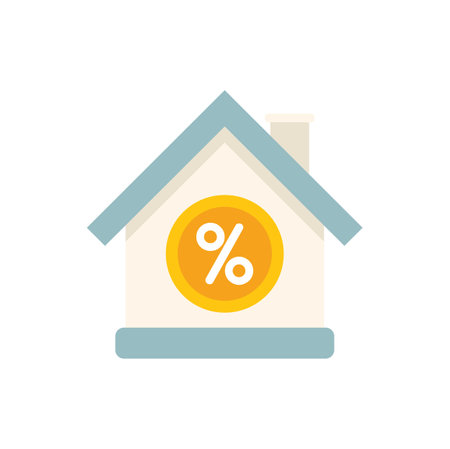Introduction to Green Mortgages in the UK
The concept of green mortgages is becoming increasingly significant within the UK property market, as both lenders and homebuyers seek to align their financial decisions with environmental sustainability. A green mortgage is a type of home loan specifically designed to incentivise the purchase, construction, or renovation of energy-efficient properties. Unlike traditional mortgages, these products may offer preferential terms such as reduced interest rates or cashback for homes that meet certain energy performance criteria. This trend is largely driven by growing awareness of climate change, the UK governments ambitious net-zero targets, and rising energy costs, all of which have accelerated demand for sustainable housing solutions. As more people recognise the long-term benefits of energy-efficient homes—ranging from lower utility bills to enhanced comfort and future-proofed asset values—green mortgages are emerging as a practical tool for financing the transition towards a greener built environment.
2. How Green Mortgages Work
Green mortgages are an innovative financial product designed to encourage and reward sustainable property investments in the UK. Unlike conventional mortgages, these loans specifically target properties that meet certain environmental standards, aiming to reduce the carbon footprint of the built environment. In this section, I’ll break down the structure of green mortgages, their eligibility requirements, and highlight what sets them apart from traditional mortgage offerings.
Structure of Green Mortgages
At their core, green mortgages operate similarly to standard mortgages: a lender provides funds to purchase or remortgage a property, which is then paid back with interest over an agreed term. However, green mortgages often come with incentives such as lower interest rates or cashback for properties that achieve high energy efficiency ratings. The primary focus is on encouraging homebuyers and landlords to invest in homes that are environmentally responsible.
Eligibility Requirements
Lenders in the UK typically require that a property meets specific energy performance criteria to qualify for a green mortgage. The most common benchmark is the Energy Performance Certificate (EPC) rating. Below is a summary table outlining standard eligibility requirements:
| Requirement | Description |
|---|---|
| EPC Rating | Usually B or above (some lenders accept C) |
| Property Type | New builds or retrofitted existing homes |
| Documentation | Valid EPC certificate presented at application |
| Location | Mainland UK properties (varies by lender) |
Some lenders may also consider additional factors such as renewable energy installations (e.g., solar panels) or low-carbon heating systems.
Key Differences from Conventional Mortgages
The following table summarises the principal distinctions between green and conventional mortgages:
| Aspect | Green Mortgage | Conventional Mortgage |
|---|---|---|
| Interest Rates | Often discounted for qualifying properties | Standard market rates |
| Eligibility Criteria | Requires high EPC rating/eco-features | No energy efficiency requirement |
| Incentives | Cashback or fee reductions possible | Rarely offer sustainability-linked incentives |
| Sustainability Focus | Aims to promote greener homes and lower emissions | No explicit environmental goal |
This structural difference makes green mortgages particularly appealing for eco-conscious buyers and investors who want to future-proof their property assets while potentially saving money on repayments.

3. Benefits for Homeowners and Investors
Green mortgages are rapidly gaining traction across the UK, offering an array of financial and environmental incentives that appeal to both homeowners and property investors. One of the most immediate benefits is the potential for cost savings. Many lenders offer preferential interest rates or cashback deals for buyers who choose energy-efficient homes or commit to making eco-friendly improvements. This reduction in borrowing costs can significantly lower monthly repayments, making green mortgages an attractive option when compared with conventional products.
From an environmental perspective, green mortgages encourage investment in properties with higher EPC (Energy Performance Certificate) ratings. This not only reduces carbon emissions but also promotes a culture of sustainability within local communities. By choosing properties with better insulation, efficient heating systems, and renewable energy sources, homeowners can enjoy lower utility bills while contributing to the UK’s broader climate goals.
Another notable advantage is the potential for increased property values. As the demand for sustainable living rises, energy-efficient homes are becoming more desirable on the market. Properties with strong green credentials often command higher resale prices and attract a wider pool of prospective buyers or tenants. For investors, this translates into stronger long-term returns and reduced risks associated with obsolescence as regulations tighten around building standards.
Additionally, participating in green mortgage schemes may unlock further grants or subsidies offered by the government or local authorities. These incentives can help offset the upfront costs of retrofitting older homes or incorporating state-of-the-art sustainable technologies. Ultimately, green mortgages represent a forward-thinking approach to property finance—empowering UK residents to make investments that benefit both their wallets and the planet.
4. The Role of Green Mortgages in the UK’s Sustainability Goals
Green mortgages have emerged as a key financial instrument supporting the UK’s transition towards sustainability and net-zero carbon emissions by 2050. As the government pushes forward with ambitious environmental targets, green mortgages are playing an increasingly significant role in encouraging both homeowners and property developers to prioritise energy efficiency. In this section, we examine how these products align with national initiatives and contribute to broader climate goals.
Alignment with Government Initiatives
The UK government has rolled out a series of policy measures aimed at improving the energy performance of buildings, which account for a substantial portion of the nation’s total carbon emissions. Notably, regulations such as Minimum Energy Efficiency Standards (MEES) for rental properties and incentives for retrofitting homes have set clear expectations for property owners. Green mortgages directly support these efforts by rewarding investment in energy-efficient properties with preferential lending terms.
Contribution to Net-Zero Targets
By linking mortgage rates or loan eligibility to the energy performance of a property, green mortgages create a tangible financial incentive for buyers and renovators to choose sustainable options. This not only accelerates the uptake of low-carbon technologies—such as improved insulation, heat pumps, and solar panels—but also helps shift market demand towards greener housing stock.
Comparing Standard vs Green Mortgages: Impact on Sustainability
| Feature | Standard Mortgage | Green Mortgage |
|---|---|---|
| Interest Rates | Typical market rate | Discounted for energy-efficient homes |
| Eligibility Criteria | No specific requirement on EPC rating | Often requires EPC B or above |
| Government Backing | No direct link to sustainability schemes | Aligned with national green finance initiatives |
The Way Forward: Opportunities and Challenges
While green mortgages offer promising support for the UK’s decarbonisation agenda, their widespread adoption still faces hurdles. These include limited consumer awareness, patchy availability across lenders, and challenges in upgrading older housing stock. Nevertheless, ongoing collaboration between government bodies, banks, and industry stakeholders is expected to further integrate green finance into mainstream property investment—making it an essential lever in achieving Britain’s long-term sustainability ambitions.
5. Challenges and Considerations
While green mortgages present a promising pathway towards sustainable property investment in the UK, there remain several challenges that both buyers and lenders must address. One of the foremost obstacles is awareness. Despite increased media coverage and government initiatives promoting green finance, many prospective homeowners are still unfamiliar with green mortgage products or the long-term benefits of investing in energy-efficient properties. This knowledge gap can lead to lower uptake and limited demand, particularly outside major urban areas where sustainable housing trends are less established.
Another significant consideration is the upfront cost associated with purchasing or retrofitting a property to meet the eligibility criteria for a green mortgage. Although these loans offer better rates or incentives for energy-efficient homes, the initial investment required for upgrades—such as installing insulation, double glazing, or renewable energy systems—can be substantial. For many UK homeowners, especially first-time buyers already stretched by high property prices and deposit requirements, these extra costs can be prohibitive without additional financial support or grants.
Retrofitting complexities also pose a unique challenge within the UK market. The country’s housing stock is among the oldest in Europe, with a significant proportion of homes built before modern energy standards were introduced. Upgrading these properties often involves complex work that can uncover unforeseen structural issues, require planning permissions, or even disrupt daily living during renovations. Navigating these hurdles can deter homeowners from pursuing green improvements, despite their long-term savings potential.
Lenders face their own set of considerations when offering green mortgages. Accurately assessing a propertys energy performance and ensuring that proposed upgrades will deliver the promised efficiency gains require robust evaluation processes. Moreover, there is ongoing debate about how best to standardise green lending criteria across the industry to prevent “greenwashing”—the risk of overstating environmental benefits for marketing purposes without genuine impact.
In summary, while green mortgages are gaining traction as a tool for financing sustainable property investments in the UK, widespread adoption will depend on overcoming barriers related to consumer awareness, upfront costs, and the inherent complexities of retrofitting older British homes. Continued collaboration between government bodies, lenders, and industry stakeholders will be essential to develop targeted incentives and support mechanisms tailored to the unique characteristics of the UK housing market.
6. Future Outlook for Green Property Financing in the UK
The green mortgage sector is poised for significant growth and transformation as the UK intensifies its commitment to a net-zero future. Several trends are emerging that will likely define the next phase of sustainable property investment financing. One key trend is the increasing integration of digital technology and data analytics, enabling lenders to better assess property energy performance and tailor financial products accordingly. Innovations such as blockchain-enabled transaction tracking and AI-driven risk assessments are also expected to streamline application processes and enhance transparency.
On a policy level, government incentives and regulations continue to evolve. Upcoming changes could include stricter EPC (Energy Performance Certificate) requirements for both new builds and existing homes, potentially making green mortgages more attractive or even necessary for buyers and investors alike. The introduction of green bonds by major banks, alongside collaboration with public agencies, may further diversify funding sources for eco-friendly property development.
Looking ahead, consumer awareness around sustainability is likely to increase demand for energy-efficient homes, putting additional pressure on developers and lenders to prioritise green features. Educational campaigns, coupled with clearer product labelling and comparison tools, will empower buyers to make informed decisions about their financing options.
Challenges remain—notably in ensuring affordability and accessibility of green finance products across different segments of the population. However, the trajectory suggests that green mortgages will become a mainstream element of the UK property market. As technology matures and regulatory frameworks adapt, these financial instruments are set to play a pivotal role in driving investment towards more sustainable, resilient housing stock across the country.


